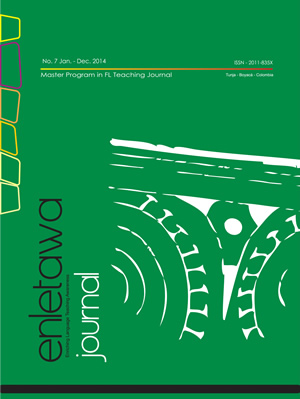Identity: Socio-Political, Sociological, Humanistic and Poststructuralist Perspectives

Abstract
Identity hasmultiple definitions and is related to many fields and theoreticians. It iscommonly believed that each person possesses one single and personal identity, but several perspectives have proposedmultiple dimensions for it. This article presents some dimensions about what the termidentity involves fromthe socio-political, sociological, humanistic, social and poststructuralist perspectives. Despite identity is displayed by people, is perceivable, transmittable, influenced by many factors, defining identity can get anywhere depending on the path to follow. The only certainty is that motivation, desires, preferences, ideology, words, tones, interjections, and clothing are issues related to identity.
References
- Deaux, K. (2001). Social Identity. Encyclopedia of Women and Gender,
- Volumes One and Two. City University of New York.
- Duff, P. (2012). Identity, agency, and SLA. In A. Mackey & S. Gass (Eds.), Handbook of second language acquisition. London: Routledge.
- Gómez, J. C. (2012). Language learners’ identities in EFL settings: resistance and power through discourse. Colombian Applied Linguistics Journal, 14(1), 60.
- Harrison, S. (2009) Spilling Open: TheArt of Becoming Yourself. Random house. 144 Universidad Pedagógica y Tecnológica de Colombia
- Jan, E. (2003). A Sociological Approach to Self and Identity. Handbook of self and identity. Department of Sociology Washington State University.
- Jiménez, J. P. (2007). (I) literate Identities in Adult Basic Education: A Case Study of a Latino Woman in an ESOL and Computer Literacy Class. Colombian Applied Linguistics Journal, (9), 25-43.
- Miyahara, M. (2010).Researching Identity and Language Learning: Taking a Narrative Approach. English Language Program International Christian University. Language Research Bulletin, 25th volume, ICU, Tokyo.
- McKinney, C. & Norton, B. (2008). Identities in Language and Literacy Education. The handbook of educational linguistics, 192.
- Norton, B. (1997). Language, identity, and the ownership of English. Tesol Quarterly, 31(3), 409-429.
- Norton, B. (2010). Identity, Literacy, and English-Language Teaching. TESL Canada Journal, 1-13.
- Norton, B. &Toohey, K. (2011). Identity, language learning, and social change. Language Teaching, 44(04), 412-446. Pavlenko, A. &Blackledge, A. (Eds.). (2004). Negotiation of identities in multilingual contexts (No. 45). Cromwell Press Limited. Great Britain.
- Raab, C. (2009). Lessons fromIdentity Trail, Anonymity, Privacy, and Identity in a Networked Society.Identity Difference and Categorization.Oxford University Press. New York.
- Rodríguez, R. Vázquez, A. &Guzmán, N. (2011).Exploring Writer Identity in Mexican EFL Students’ Academic Writing.IKALAvol 16 No 28 2011, 93-115.
- Rojas, M. X. (2012). Female EFL teachers: shifting and multiple gender and language-Learneridentities. Colombian Applied Linguistics Journal, 14(1), 92-107.
- Schöpflin, G. (2001). The construction of i d e n t i t y . Ö s t e r r e i c h i s c h e r Wissenschaftstag, retrieved from: http://www.oefg.at/text/veranstaltungen/wissenschaftstag/wissenschaftstag01/Beitrag_Schopflin.pdf
Downloads
Download data is not yet available.